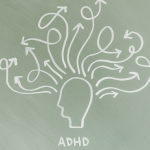Cognitive Dysfunction: Alternative and Complementary Therapy Options
John Hahn, DPM, ND
As we enter the new millennium, the practice of healthcare in the United States is fundamentally and rapidly changing with the passage of the Patient Protection and Affordable Care Act. Due to evolving social, technological, and economic influences, there is going to be increasing pressure from healthcare underwriters to justify the use of medical interventions in the treatment of elderly patients with cognitive dysfunction.
At the same time, patient populations in the United States are getting older and/or are requiring unprecedented attention due to the unique health needs of the aged. The advent of online health information has allowed patients to become more cognizant of their health treatment options. These patients are beginning to assert influence over healthcare decisions that were formally left up to the treating physician.1
Our aging population is beginning to look for safer alternatives to standard drug therapy for maintaining cognitive brain function, and is also seeking complementary and alternative medicine (CAM) as a viable adjunct to traditional medical care.
Changing Demographics
A study by Eisenberg et al suggested that cognitive concerns do not seem to be a reason for using unconventional medicine in the United States.2 However, the growing presence of these supplements on various store shelves, including herbal remedies and mega-vitamins touted for their benefits for memory and concentration, suggest an increase in their use. A second survey by Eisenberg and his colleagues supports this growth trend.3
The patient population that will be most affected by this evolving healthcare system is the elderly. As Longino reports, between 1900 and 2050, the population of Americans aged 65 years and older will have increased from 4% to 20%. Citizens aged 85 years and older will account for 5% of the population, up from 0.2% in 1900.1
The same American medical tradition which greatly reduced the incidence of infectious diseases and helped increase lifespan is, by some estimates, not fully prepared to address the more chronic and complex needs of the aging American.
While not yet fully integrated into the mainstream medicine of the United States, CAM has begun gaining a foothold in the infrastructure of the US healthcare delivery system. Stanford University now has a CAM program with a specialty in aging, sponsored by the NIH’s National Center for Complementary and Alternative Medicine (NCCAM), formerly the Office of Alternative Medicine. The major goals of this program are to: assess the effectiveness of CAM therapies for enhancing functional capacity and quality of life, and decreasing physical disability and frailty among elders; promote the understanding of CAM to enhance the physical functioning of elders; disseminate valid information regarding CAM; and provide technical support to CAM practitioners for the objective assessment of CAM therapies.2-4 The CAM program at Stanford University is currently conducting a study to evaluate the effects of an herbal medicine on cognitive function in the elderly.5
Nontraditional therapies may be particularly attractive for treating health problems among the aged, including dementia, for which conventional medicine seems to have little to offer.6
Dementia and Calcium Toxicity
Dementia is generally defined as a progressive organic mental disorder characterized by deficits in many cognitive processes such as perception, memory, logical thought, orientation, and alertness. Causes of dementia include infection, drugs, malnutrition, metabolic imbalances, and depression. Root causes of dementia are also associated with certain chronic illnesses, such as ischemia and blood vessel deterioration (vascular disease), vitamin B1 deficiency (Korsakoff’s psychosis and Wernicke’s encephalopathy), dopamine deficiency (Parkinson’s disease), and dsyregulation of cholinergic nerve tracts in the brain due to neurofibrillary tangles and plaques (Alzheimer’s disease). The prevalence of dementia is substantial: This year, an estimated 5.2 million Americans are suffering from Alzheimer’s dementia, with 5 million of these individuals being age 65 years and older.7
After the age of 40, there is a diminishing supply of calcium-binding proteins in brain neurons that help protect against accumulation of intracellular calcium. Unlike calcium in the bones or teeth, where it contributes to strength and structure, ionic calcium in the nervous system is required for the lateral signals of the nervous system, which travel to and from and within the brain.
The depletion of calcium-binding proteins in aging render neurons more vulnerable to excitotoxicity from excess calcium, and can lead to cell death. This mechanism has been identified as a key mechanism in age-related cognitive decline.8 We also see that calcium-binding proteins are utilized elsewhere in the body to manage excess calcium. Alzheimer’s disease, the most prevalent dementia in aging, is a progressive neurodegenerative disorder.9 Memory dysfunction in the early stage of Alzheimer’s involves synaptic loss, mediated by soluble amyloid-beta oligomeres. Rodent studies have shown that these oligomeres increase intracellular calcium (Ca2+), which impairs synaptic plasticity; levels correlate with the severity of the disease.9 Reese et al recently investigated the distribution of phosphorylated (active) Ca2+/calmodulin-dependent protein kinase in Alzheimer’s patients.9 Their findings demonstrated that the movement of calcium across the cell neuron membrane and changes in calcium regulation can contribute to declines in learning and memory, leading them to recommend that normalizing this process should be considered for preventing or delaying early Alzheimer’s.9
Therapeutic Solutions
Chelation
Fortunately, excess calcium levels in the brain can be reduced through chelating chemicals such as EDTA (ethylenediaminetetraacetic acid). I have utilized intravenous (IV) chelation in my practice over a number of years and have seen firsthand how my patients benefit not only from the cardiovascular changes that result from reducing calcium in the arterial plaques, but also from improvements in cognitive function.
IV chelation is safe when the American College for Advancement in Medicine (ACAM) protocols are followed for the slow-IV-drip methodology. IV chelation therapy can be inconvenient for patients, as they have to be hooked up to the IV for a minimum of 3 hours at a time. A broad-spectrum mineral replacement is necessary at the end of the IV chelation, to prevent hypokalemia and other mineral losses, such as magnesium.
Ginkgo biloba
One nutraceutical that has been studied for its potential to improve cognitive functioning is Ginkgo biloba. In a ground-breaking, double-blind empirical clinical trial in the United States, Le Bars and colleagues conducted a 52-week multi-site study investigating the efficacy and safety of a Ginkgo biloba extract in 309 mildly-to-severely-demented patients with Alzheimer’s disease or multi-infarct dementia.10 Over 6 months to 1 year, Ginkgo biloba was found to stabilize and, in some cases, improve cognition.
Extract of Ginkgo biloba has also been reported in an animal model to modulate the balance of neurotransmitters by increasing concentrations of acetylcholine and activity of dopaminergic neurons – 2 ways in which it might affect cognitive function.11
Apoaequorin
The nutraceutical, apoaequorin, has appeared on the list of OTC products that can help alleviate cognitive dysfunction secondary to increased interneuronal calcium levels. Apoaequorin is a photoprotein originally isolated from luminescent jellyfish and a variety of other marine organisms. It was originally isolated from the phylum, coelenterate, by Dr Osamu Shimomura. By utilizing the protein’s luminescence as a marker, he and his colleagues were able to track calcium’s role in various physiological processes. This work led to the 2008 Nobel Prize in chemistry for Dr Shimomura, Marti Chalfie, and Roger Y. Tsein.12
A synthetic form of apoaequorin is marketed as an oral form of brain calcium management. A double-blind, placebo-controlled study of the effects of this supplement was conducted in 218 older adults with mild memory impairment. After 90 days, apoaequorin was shown to improve several measures of cognitive function compared to placebo.13,14 The study demonstrated this product’s ability to improve usefulness in the treatment of normal age-related memory concerns.
Dementia & Anxiety
One of the most frequently seen emotional components of senile dementia is anxiety and stress. Patients suffering from dementia who cannot remember where they left their keys, car, or glasses experience daily stress.
There are several natural therapies, utilizing a combination of vitamins, herbal extracts, and amino acids, that have shown clinical success in patients diagnosed with both dementia and anxiety disorders. Examples of constituents of a successful natural formula include vitamin B6 (as pyridoxine or pyridoxal-5-phosphate), L-tyrosine, gamma-aminobutyric acid (GABA), 5-hydroxytryptophan (5-HTP), 5-methyltetrahydrofolate (5-MTHF), and Melissa officinalis (lemon balm).
These nutraceuticals have been researched over a number of years for their effects on human physiology. Placing patients with dementia and anxiety on naturally-occurring substances in combination and in specific ratios has been shown in numerous studies to be safe and to produce dramatic reductions in stress and anxiety.
5-Hydroxytryptophan
The amino acid, 5-hydroxytryptophan (5-HTP) naturally occurs as the intermediate metabolite of the amino acid, tryptophan, in the serotonin pathway. However, it can also be extracted from the seeds of a plant called Griffonia simplicifolia, which is mainly found in West Central African thickets, usually associated with mounds of the termite Macrotermes on plains and forests, in secondary vegetation and old farms.
Serotonin is essential for maintaining proper mood, cognitive functioning, and sleep. Tryptophan is normally converted to 5-HTP by the enzyme, tryptophan hydrolase, which is also the rate-limiting step in the synthesis of serotonin. This enzyme can be inhibited by numerous factors, including stress, insulin resistance, vitamin B6 deficiency, and insufficient magnesium.15 In addition, these same factors can increase the conversion of LT2 kynurenine via the enzyme, tryptophan oxygenase, making tryptophan unavailable for serotonin production. Therapeutic use of 5-HTP bypasses the conversion of L-tryptophan to 5-HTP, thereby ensuring its availability. The recommended dosage of 5-HTP is 100 mg BID to TID.
Mucuna pruriens
Mucuna pruriens, (also known as velvet bean) is a climbing shrub with long lines that can reach over 50 meters. It bears white, lavender, or purple flowers in pods and is covered with loose orange hairs that can cause a severe itch when they come in contact with the skin.16 The seeds of Mucuna pruriens contain high concentrations of levodopa, a direct precursor of the neurotransmitter dopamine. It has been used traditionally in Ayurvedic medicine for diseases including Parkinson’s disease, and a rat model also showed oral administration of Mucuna to produce significant increases in brain dopamine.17
Dopamine plays an indispensable and diverse role in cognition, learning, mood and behavior. This critical neurotransmitter controls the flow of information that helps maintain mental sharpness, alertness, memory, and cognitive performance. The biosynthesis of dopamine requires the precursor L-tyrosine, as well as the cofactors 5-MTHF and activated vitamin B6.
5-Methyltetrahydrofolate
Methylfolate, or 5-methyltetrahydrofolate (5-MTHF), is the active form of folic acid and is capable of passing through the blood-brain barrier. In the brain, it helps balance the chemical messengers that affect mood, such as serotonin, norepinephrine, and dopamine. It is a member of the B-complex family of vitamins, and works in concert with vitamin B12. The compound is necessary for DNA synthesis, in addition to being a methyl-group donor involved in many bodily processes.16 Supplemental folic acid can reduce homocysteine levels and the occurrence of neural tube defects. Neuropsychiatric conditions that may be secondary to folate deficiency include dementia and memory problems, insomnia, endogenous depression, schizophrenia-like syndromes, peripheral neuropathy, myelopathy, and restless leg syndrome.18
The importance of L-methylfolate in depression is that, unlike folic acid, it can cross the blood-brain barrier to help the methylfolate-deficient brain produce neurotransmitters that affect mood. Nutraceuticals such as 5-MTHF can also be combined successfully with SSRIs to enhance their effectiveness.19
It has been shown that people with the an MTHFR (methylenetetrahydrofolate reductase) polymorphism, which limits the body’s ability to reduce dietary folate or folic acid into methylfolate, have an increased risk of depression.20
Certain medications may interfere with folate metabolism, such as anticonvulsants, methotrexate, metformin, fluoxetine, niacin, and warfarin.21
Pyridoxal-5-Phosphate
The metabolically-active coenzyme form of vitamin B6 is pyridoxal-5-phosphate (P5P), which is the main circulating form. P5P is exported from the liver and is considered the most relevant direct measure of B6 status.22 P5P enzymes play a role in the biosynthesis of 5 five important neurotransmitters: serotonin, dopamine, epinephrine, norepinephrine, and GABA.23
Tyrosine
L-tyrosine is involved in the synthesis of neurotransmitters in the brain. It is a precursor to dopamine, norepinephrine, and epinephrine; thus, brain concentrations of these neurotransmitters are dependent upon the intake of tyrosine.24 Tyrosine requires biopterin (a folate derivative), NADPH, and NADH (forms of niacin), copper, and vitamin C. L-dopa is an amino acid which is synthesized from tyrosine. Tyrosine is also a precursor to thyroid hormones and is involved in the synthesis of melanin pigment in the body, as well as enkephalins, substances which have pain-relieving effects in the body.
In a double-blind, placebo-controlled study, tyrosine relieved depression in subjects, to a degree that is comparable to major antidepressants, but without side effects.25 Anecdotally, clinical treatment of depression has been shown to be successful using a dosage of 1 to 6 grams per day. In a small study, administration of tyrosine was shown to improve cognitive function and reduce blood pressure in participants subjected to stress. However, in this study, no changes in mood were observed.26
Melissa officinalis
Melissa officinalis (lemon balm) has been used historically as an anxiolytic, a mild sedative and calming agent. One study examining the effects of lemon balm in healthy young subjects found that the highest dose used (1600 mg) induced calmness and improvements in memory.27
Lemon balm extract has been identified as a potent in-vitro inhibitor of GABA transaminase, which may explain its anxiolytic effect. The major component responsible for GABA transaminase inhibition activity is thought to be rosmarinic acid.
GABA
Gamma-aminobutyric acid (GABA) is an inhibitory neurotransmitter in the central nervous system. GABA’s primary actions are to regulate neuronal excitability throughout the nervous system by acting on inhibitory synapses in the brain.28
GABA is also directly responsible for the regulation of muscle tone. Increasing the available amount of GABA typically has a relaxing, anti-anxiety and anticonvulsant effect on the patient. GABA is available in an oral form as a nutritional supplement. Studies have suggested that orally-administered GABA may also work on the pituitary level to increase human growth hormone production.29
EGCG
Henry L. Paulsen, MD, writing for the University of Michigan’s NeuroHealth blog on June 25, 2013,30 described the powerful properties of epigallocatechin-3-gallate (EGCG), a flavonoid in green tea. ECGC, Paulsen said, appears to protect the brain from the accumulation of amyloid plaques that scientists believe is the leading cause of brain deterioration associated with Alzheimer’s disease. Similarly, in an article entitled “Green Tea Protects Brain Cells,”31 in the June 2013 issue of Tufts University’s Health & Nutrition Letter, the authors described studies showing that “green tea may someday be a potent weapon in the fight against Alzheimer’s disease and other forms of dementia.” A double-blind, placebo-controlled study32 published in the European Journal of Clinical Nutrition in August, 2012, showed that ingestion of green tea by healthy subjects was associated with increased activity in the dorsolateral prefrontal cortex – the area of the brain responsible for processing working memory.
Acetylcholine Modulators
Acetylcholine, which is the primary neurotransmitter involved in memory formation, alertness and muscle movement, tends to decrease with age. Several nutraceuticals have been shown to influence brain acetylcholine levels.
One clinically-tested nutraceutical that helps maintain acetylcholine levels in the brain is a derivative of the plant Huperzine serrata. Huperizine A is a competitive, reversible, and well-tolerated inhibitor of the enzyme acetylcholinesterase, which degrades acetylcholine. Huperzine A has been shown to reverse or attenuate cognitive deficits in various animal models. Additional neuroprotective effects may include regulation of beta-amyloid precursor protein metabolism, and alleviation of beta-amyloid and glutamate-induced neurotoxicity and apoptosis.33
A bioavailable form of acetylcholine is called L-alpha-glycerylphosphorylcholine (alpha-GPC). Alpha-GPC is a rapidly-absorbed source of choline, since it does not carry the electrical charge of regular choline, thus making it easier for the compound across the blood-brain barrier.34
Phosphatidylserine
Phosphatidylserine is an agent that is naturally high in cell membranes, including those in the brain. Phosphatidylserine has been shown to increase neuronal cell membrane fluidity, which is critical for efficient signaling in the nerve cell.35 Membrane phospholipids play an important role in cell-to-cell communication, particularly in the central nervous system, where phosphatidylserine concentrations correlate with neural plasticity, neurotransmitter function, and cognitive performance.
Methylcobalamin
Methylcobalamin is a methylated form of vitamin B12, with demonstrated bioavailability when administered in high doses. Methylcobalamin has been shown to reduce homocysteine levels associated with cognitive decline, although its administration does not necessarily exert beneficial effects on cognition.3
Comment
The nutraceuticals presented in this article are but a few of the alternative and complementary therapies available to the aged population that may be suffering from dementia, anxiety, and depression. Several of those described above work in a synergistic fashion to help promote better cognitive function, less anxiety, and better sleep patterns.
I believe further research conducted on humans will show that nutraceuticals will play an important role in the ongoing treatment of cognitive function and Alzheimer’s disease in our aging population.
 John Hahn, DPM, ND, completed his undergraduate studies at American River College and Sacramento State University, then attended the California College of Podiatric Medicine in San Francisco where he received his Bachelor of Science and Doctor of Podiatric Medicine degrees. Dr Hahn completed his surgical residency at the California Podiatry Hospital in San Francisco, and is board-certified in foot surgery by the American Board of Podiatric Surgery. He received his Doctor of Naturopathic Medicine from NCNM in Portland, OR, and is an active member of the OANP and the APMA. Dr Hahn has served as a clinical instructor at the Oregon Health Science University and the Veterans Administration Hospital in Portland, OR, in podiatry. He has also taught as an adjunct professor at Pioneer Pacific College, Clackamas Community College, and the New York College of Podiatric Medicine. Dr Hahn practices naturopathic medicine in conjunction with podiatric medicine utilizing nutraceutical and homeopathic treatments for various medical conditions. He has also formulated several nutraceutical products currently on the market.
John Hahn, DPM, ND, completed his undergraduate studies at American River College and Sacramento State University, then attended the California College of Podiatric Medicine in San Francisco where he received his Bachelor of Science and Doctor of Podiatric Medicine degrees. Dr Hahn completed his surgical residency at the California Podiatry Hospital in San Francisco, and is board-certified in foot surgery by the American Board of Podiatric Surgery. He received his Doctor of Naturopathic Medicine from NCNM in Portland, OR, and is an active member of the OANP and the APMA. Dr Hahn has served as a clinical instructor at the Oregon Health Science University and the Veterans Administration Hospital in Portland, OR, in podiatry. He has also taught as an adjunct professor at Pioneer Pacific College, Clackamas Community College, and the New York College of Podiatric Medicine. Dr Hahn practices naturopathic medicine in conjunction with podiatric medicine utilizing nutraceutical and homeopathic treatments for various medical conditions. He has also formulated several nutraceutical products currently on the market.










